
Manduca muscosa, the muscosa sphinx, is a moth of the family Sphingidae.

Manduca occulta, the occult sphinx, is a moth of the family Sphingidae.
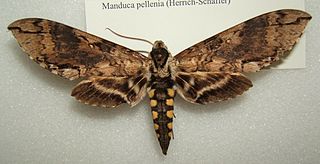
Manduca pellenia is a moth of the family Sphingidae. It is known from Mexico, Belize, Guatemala, Nicaragua, Costa Rica, Panama, Colombia and Ecuador.

Manduca bergi is a moth of the family Sphingidae first described by Walter Rothschild and Karl Jordan in 1903.

Manduca boliviana is a moth of the family Sphingidae. It is known from Bolivia.
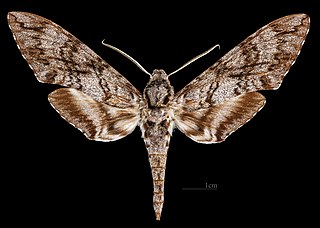
Manduca corumbensis is a moth of the family Sphingidae.

Manduca dalica is a moth of the family Sphingidae.

Manduca franciscae is a moth of the family Sphingidae.

Callionima denticulata is a species of moth in the family Sphingidae, which is known from Panama, Mexico, Costa Rica, Nicaragua, Bolivia, Peru and western Venezuela. It was originally described by Schaus as Calliomma denticulata, in 1895.
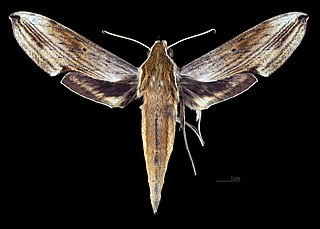
Xylophanes dolius is a moth of the family Sphingidae. It is known from Ecuador and Bolivia.

Xylophanes resta is a moth of the family Sphingidae.

Xylophanes rhodina is a moth of the family Sphingidae. It is known from Panama and Costa Rica.

Eupyrrhoglossum sagra, the Cuban sphinx, is a moth of the family Sphingidae. The species was first described by Felipe Poey in 1832. It is known from tropical and subtropical lowlands in Cuba and from Mexico and Belize to Guatemala, Costa Rica, Bolivia, Paraguay, Argentina and Uruguay. Occasionally, strays are found in Florida.

Isognathus scyron is a moth of the family Sphingidae.
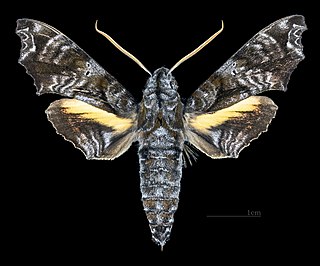
Nyceryx eximia is a moth of the family Sphingidae. It is known from Panama, Costa Rica, Guatemala and Mexico, as well as Ecuador.

Manduca lanuginosa is a moth of the family Sphingidae first described by Henry Edwards in 1887. It is known from Mexico, Belize, Honduras, Nicaragua, Costa Rica and Venezuela.

Manduca manducoides is a moth of the family Sphingidae.
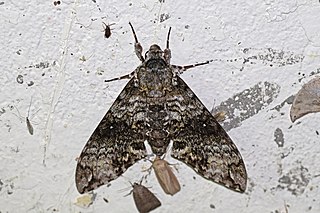
Manduca schausi is a moth of the family Sphingidae. It is found from Mexico, Guatemala, Nicaragua and Costa Rica to Brazil, Argentina and Bolivia.
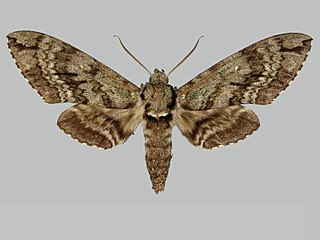
Manduca undata is a moth of the family Sphingidae. It is known from Argentina and Paraguay.

Manduca trimacula is a moth of the family Sphingidae. It is found from Colombia to Ecuador, Venezuela and Bolivia.























